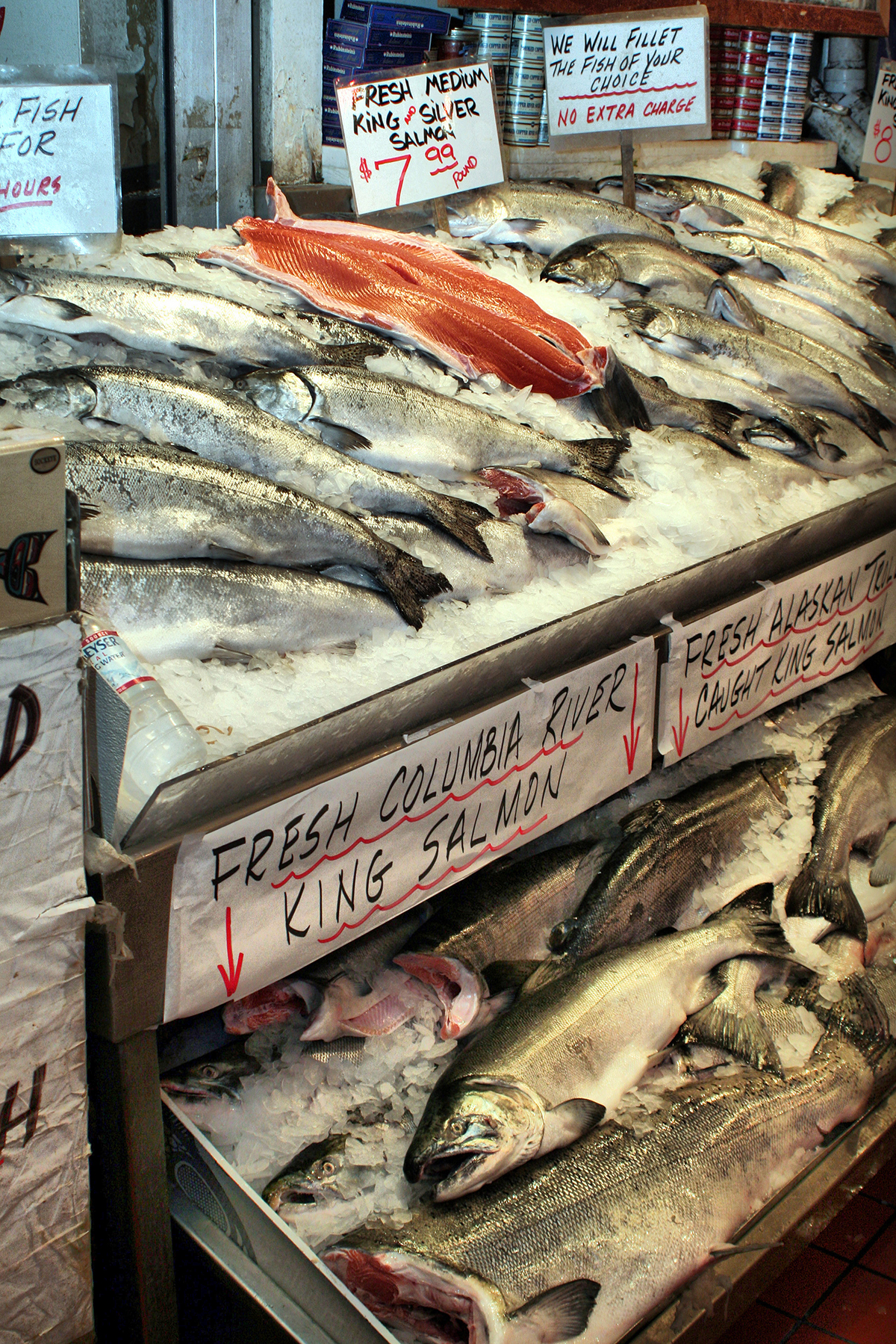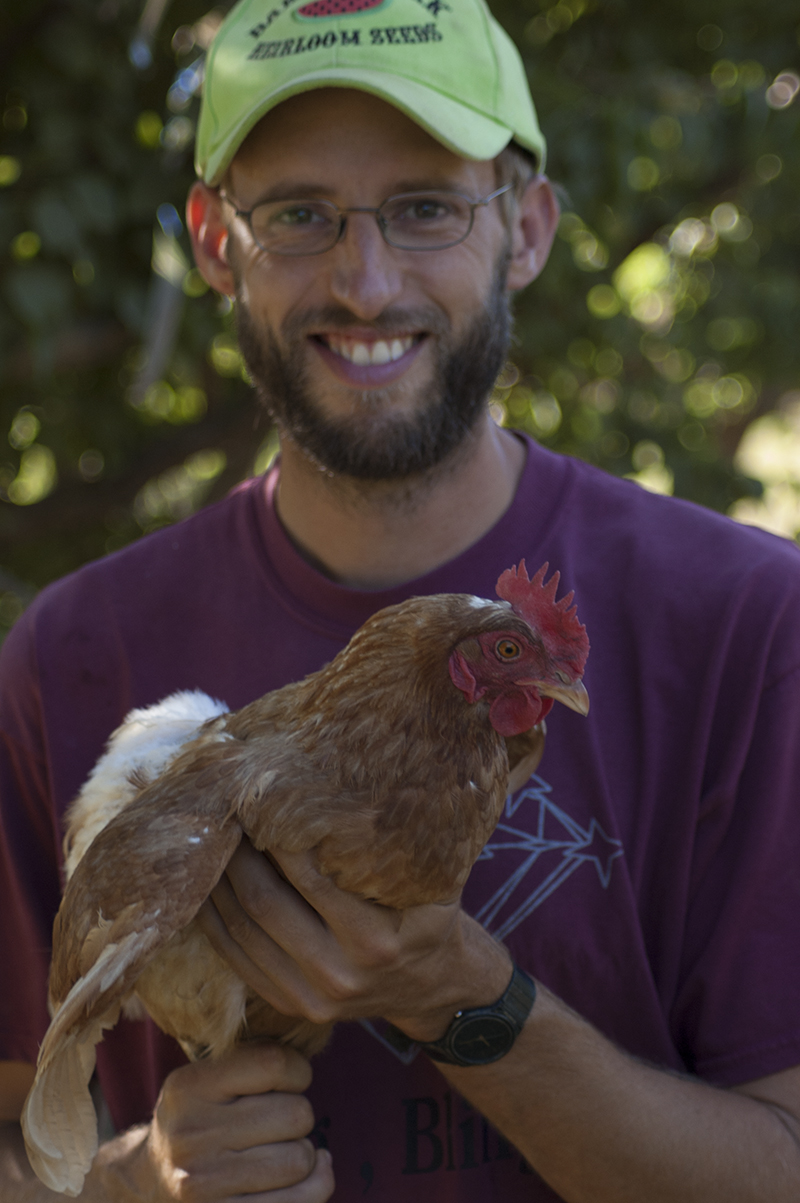I had a dream: I went to the market and knew everything essential to choosing the best kind of salmon. I knew that king was also chinook and that keta was another name for dogfish. I knew sockeye had the strongest flavor and king the fattiest flesh. If I wanted value and sustainability or I simply wanted to make a wonderful chowder, I’d choose pink. I wasn’t lurking around Loki with a recipe for “salmon” too embarrassed to ask which of the different kinds I should use. And when I did choose, I felt confident that the fish I selected wasn’t one my children would only read about or would dose them with mercury. In short, I understood the variables. I wasn’t confused and I wasn’t swimming. I came home with the perfect piece of fish.
Dreams are dreams. Confidence, unfortunately, requires research. So I hit the books, inspired by the knowledge that pink salmon are having an incredible run right now in the waters between Seattle and Everett.
Despite their various aliases (I count 15!) and the tendency of cookbooks to treat all salmon as one, the family Salmonidae includes five Pacific salmon: chinook, sockeye, coho, chum, & pink. Salmon are anadromous, meaning that they begin their life in freshwater, migrate to the ocean, and then return to freshwater—usually the same stream they were born in—to reproduce and then die. This return migration is the salmon run you’re always hearing about. Steelhead and trout, it turns out, are also members of Salmonidae. They are the same species, in fact: rainbow trout. The difference is that steelhead migrate; trout do not. Wild steelhead are extremely threatened, and Washington state banned commercial fishing of them in 1984.
In terms of size, lifespan, fat content, price, and sustainability, our Pacific salmon stack up neatly by tropic level or their rank on the food chain. Chinook, or king, salmon are the biggest, longest-lived, fattiest, most expensive, and, many would say, tastiest salmon. They are also the most contaminated by mercury, PCB’s (coolants), PBDE’s (flame retardants), and other distressing chemicals that have persisted in and permeated our environment. Pink salmon are the smallest, shortest-lived, and leanest of the Pacific salmon, though I love their creamy taste. They are also the cheapest and least contaminated.
This contamination, though, should be taken in perspective. First, salmon fats are fabulous for us. Second the contamination level, even among chinook, is insignificant compared to the big offenders: marlin, king mackerel, and yellow-fin tuna. The Monterey Bay Aquarium lists wild-caught Pacific salmon of all types as “The Best of the Best” for health.
I was starting to feel a little more confident, and ready to shop. Here’s a handy guide if you’re planning to head to the fishmonger too!
CHINOOK
Aliases King salmon, spring salmon, blackmouth salmon, Copper River salmon (when they come from the Copper River)
Average size Largest of all species: 10–50 lbs.
Average lifespan Five years
Season May–September
Sustainability Nine populations listed as threatened under the Endangered Species Act.
Price Highest—up to $30 per pound.
Contamination Highest levels of PCBs and PBDEs.
Cooking Fattiest of all salmon. Balanced, luxurious flavor. Best grilled or seared.
SOCKEYE
Aliases Red salmon (for their flesh), blue black salmon (for their skin)
Average size 3–8 lbs.
Average lifespan Four to six years
Season May–September
Sustainability Listed as an endangered and threatened species in Snake River and Lake Ozette, respectively. Populations are more secure in Puget Sound and the Columbia River.
Price High, generally second to chinook—up to $25 per pound.
Contamination About ⅓ the accumulation of PCBs and PBDEs; only slightly more than coho.
Cooking Fatty flesh and the strongest flavor. Because of their krill-based diet, their flesh is a beautiful ruby-grapefruit red. Best grilled or seared to show off their color.
COHO
Aliases Silvers
Average size 7–11 lbs.
Average lifespan Two to four years
Season June–October
Sustainability Four of the seven populations of coho in Washington and Oregon are listed under the Endangered Species Act.
Price Generally less than chinook and sockeye, up to $20 per pound.
Contamination PCB and PBDE levels are less than that of sockeye and more than chum.
Cooking Medium oil content, savory and satisfying with a milder flavor. Delicious on the grill as well as poached or steamed.
CHUM
Aliases Keta salmon, dogfish
Average size 10–15 lbs.
Average lifespan Three to six years
Season June–November
Sustainability Two populations are on the Endangered Species List: Hood Canal and the Lower Columbia. It’s the second most abundant salmon species, behind pinks.
Price Inexpensive—between $5 and $10 a pound.
Contamination The second-least-contaminated Pacific salmon.
Cooking Lean flesh, mild flavor. Good steamed and smoked. Wonderful in spreads and salmon cakes. Takes seasoning exceptionally well.
PINK
Aliases Humpback salmon
Average size 3–5 lbs.
Average lifespan Two years
Season June–November
Sustainability Most sustainable. No populations on the Endangered Species List. There are threatened populations in Washington and California. Fisheries in Alaska and British Columbia are secure.
Price Least expensive—currently $11 for a whole, wild, 3–4 lb. fish.
Contamination Because of their short lifespan and their low-food-chain, plankton-based diet, pink salmon are the cleanest, with the lowest bio-accumulation of toxins.
Cooking Leanest flesh, mildest flavor, delicate flakes. Good smoked, in chowder, or gently broiled. Least forgiving to overcooking.
food@seattleweekly.com
* * * * *
COOKING TIPS
Becky Selengut, chef extraordinaire and the author of the great book Good Fish: Sustainable Seafood Recipes From the Pacific Coast (2011, Sasquatch Books), believes every species of Pacific salmon is delicious. You just have to cook them the right way.
Becky categorizes salmon into two fatty species, chinook and sockeye, which are best seared or grilled; and two lean species, chum and pink, which are best with moist heat—for example, steamed or in chowder. She borrows a baseball term and calls the versatile coho a “utility player.”
Regardless of the species, buy the freshest, firmest fish you can and don’t overcook it. Your goal is to cook the salmon to the point that the flakes of the fish spread slightly, like a fan, when you press the flesh with your finger. If the flakes do not separate, cook the salmon a bit more. If the flesh crumbles, you’ve overcooked it. The white protein that appears at the top of cooked salmon—of any species—is another indication that the fish is overdone.







